Portage Valley
The tiny little hole in the mountain was quaintly framed by a gabled roof outline, making it look vaguely like a strange barn with the door open. But we knew it was the entrance to a tunnel. A very small entrance. It was large enough for a railroad car – OR a big truck, one big truck. It wasn’t even wide enough for two Smart cars to pass each other. That would explain why we were waiting in line.
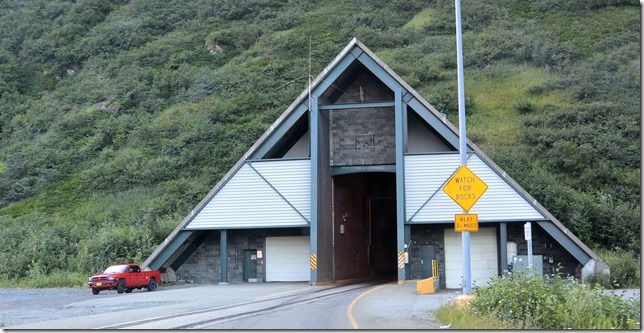
We were taking our turn through the longest rail/highway tunnel in North America, between Portage and Whittier. Apparently, the war-time tunnel planners did not see the economic benefit for making it double-wide, so the use of the tunnel is time-shared between railroad traffic, eastbound autos and trucks, and westbound autos and trucks. In general, westbound is on the hour, and eastbound on the half-hour, with trains (we never saw one go through) sneaking by either in-between or at night.
Driving through the tunnel (with Ralph, not Howie) was unremarkable, except for the rails’ tendency to steer us back and forth just a tad. There’s a 25mph speed limit, and it takes us a few minutes to make it into the central part of the tunnel. Here, the smooth concrete gives way to projecting crags of rock. We have plenty of time to notice how closely the rocky walls crowd the roadway. We are glad that we’ve not chosen to squeeze Howie through the slim passage (but there are many RV’s on the other side that made the trip without knocking their mirrors off).
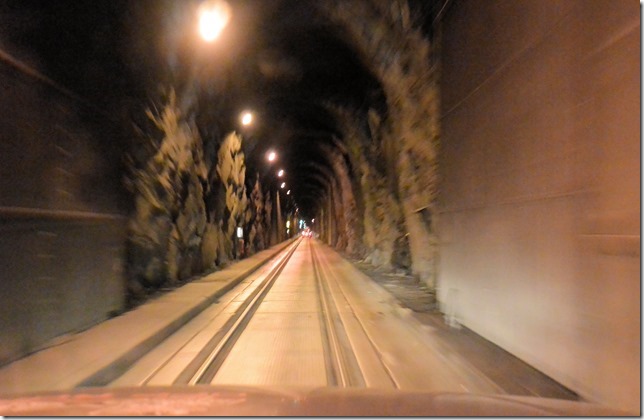
We arrived at the tunnel after a pleasant drive southeast from Anchorage. Just as the Seward highway takes a hard right around the end of Turnagain Arm, a small road heads off east into Portage Valley, a really pretty part of an already pretty area.
The valley got its name from the gold-rushers who docked at Whittier and made their way overland to the Turnagain Arm and the Cook Inlet. The road into the valley is flanked by glacier-laced mountains, nicely welcoming us. Checking in at the visitor center, we found that here was enough to do (on both sides of the mountain) to keep us around for a few days.
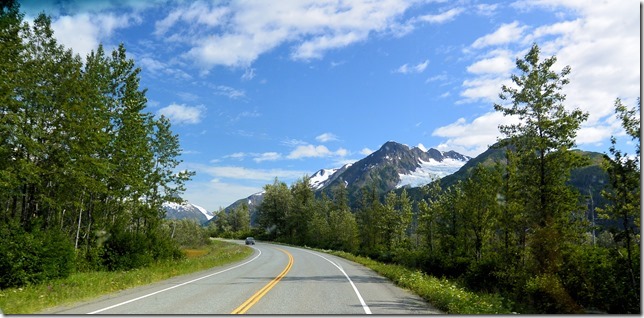
Williwaw camp is just a mile or two from Portage Lake and the tunnel. It’s a gorgeous paved camp with widely-spaced sites, and we had our own private glacier-fed waterfall as a backdrop. Accented, of course, with the ubiquitous fireweed.
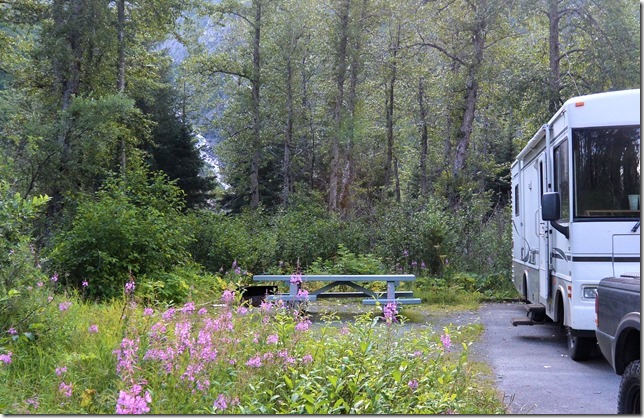
Our first day took us over for a longer look around the visitor center. Situated at the western edge of Portage Lake, an occasional Portage Glacier “iceberg” will make it down to the shore, blown the length of the lake by the prevailing easterlies. These aren’t your typical Titanic-sinking icebergs, they’re more like cocktail icebergs. But they are still 20 feet wide, and of course 90% of the ice is below the water. They don’t last very long in summer 60F temperatures. This one had almost disappeared by the day after I took the picture.
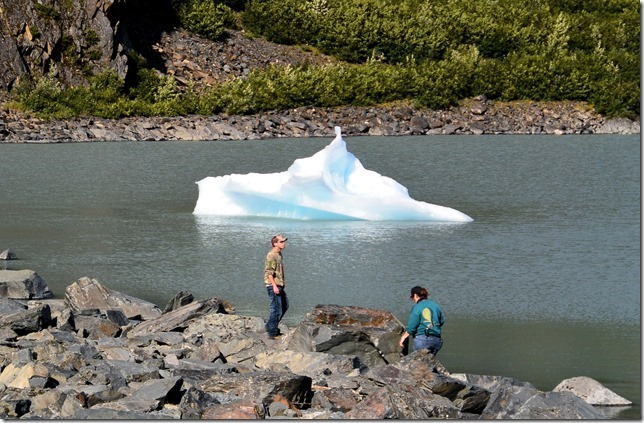
At the northern tip of Portage Lake, there’s a put-in for “muscle-powered” boats. This would allow us to paddle along the northeast shore and reach the Portage Glacier in our inflatable kayak Bote. We checked out the access path, and it was an easy put-in. BUT – – – This is not your typical idyllic summer float-ride. The glacier-fed water is icy cold, sometimes 40-45F. The weather was worsening, the skies darkening, and (worst of all) the wind was picking up. During poor weather, icy 20mph winds blow off the glaciers, and the steep rock cliffs along the lake offer no shelter at all. If everything went right, it would be a fun and exciting 3-hour trip. But if something went wrong, it could be anywhere from inconvenient, to embarrassing, to life-threatening. We thought long and hard about it, but finally decided to take the tour boat instead of our own. Turned out to be a pretty good decision.
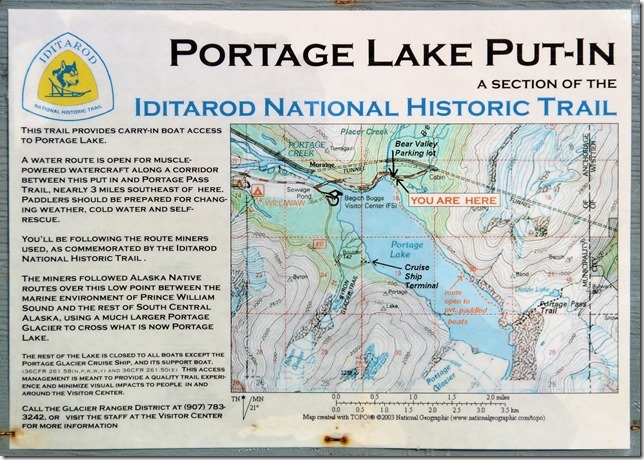
Some paddle-boarders did put in while it was still sunny and comparatively calm. But they came back out after only a half-hour, and didn’t even attempt the long paddle to the glacier.
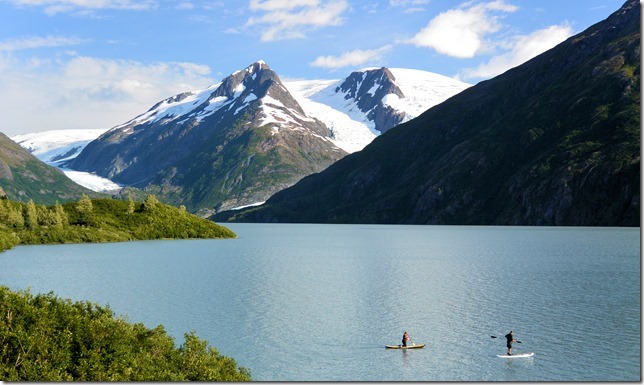
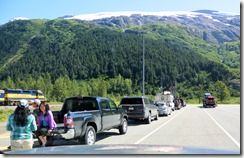
The tour boat turned up lame, due to mechanical issues. Too bad, ‘cause it’s the last sunny afternoon for a while. So instead, we got in line for the tunnel and went over to explore the Whittier port area.
The port is well worth a half-day’s snooping-around visit. There were kayak-rental places that tempted us (cleaning up Bote after a salt-water excursion is troublesome with limited water supplies). But we decided instead to just explore a bit.
The marina is up-scale, not your typical rag-tag like we’ve found in other small ports. These are clean, well-kept, generally expensive boats, many of them commercial craft festooned with nets and hardware. A charming Inn rests at the edge of the marina, nicely architected and constructed.
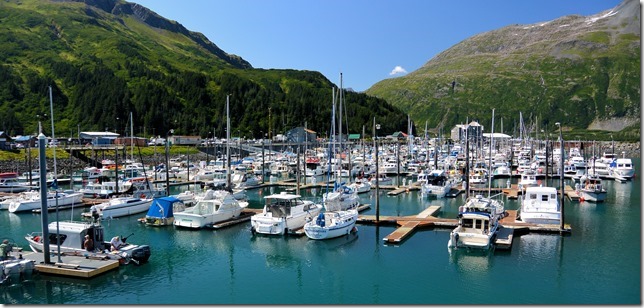
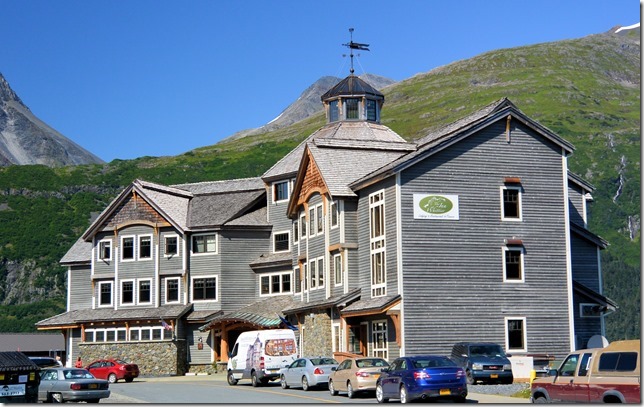
Just up the shoreline road, glacier-fed streams rush down to the shore. Across the inlet, white-carpeted peaks rise above the chilly ocean waters. It all reminds us how close we are to the wild.
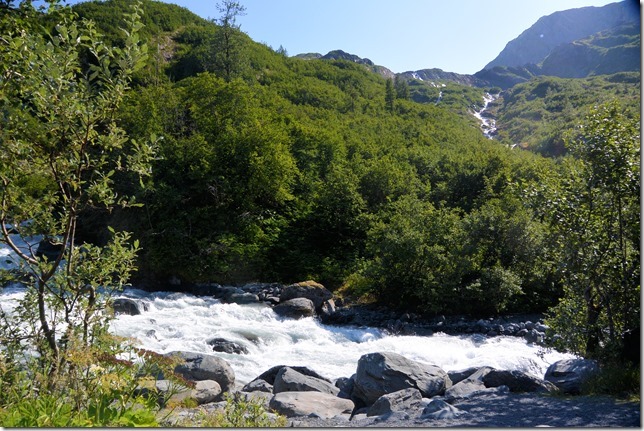
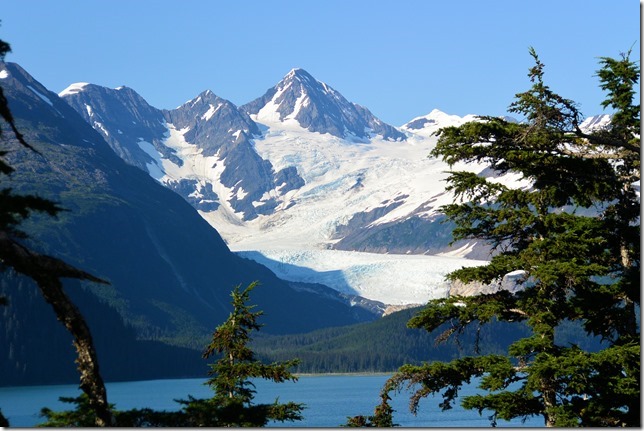
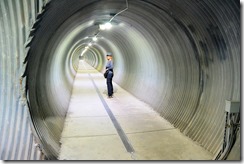
A walking tunnel burrows under the railroad tracks, and provides foot access over to the old side of town.
There, the original military building which housed a virtual “city” of soldiers during the cold war era still stands. Interestingly, the building was constructed in separate pieces, such that it experienced the 1964 earthquake undamaged. However, it’s not in use today, and the broken-out windows and hollow interior are a sad requiem for such a stalwart survivor.
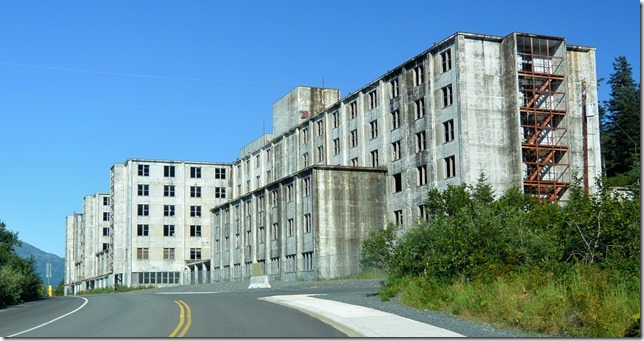
The sign says the old buildings are in use today, but obviously not this one. We wonder why.
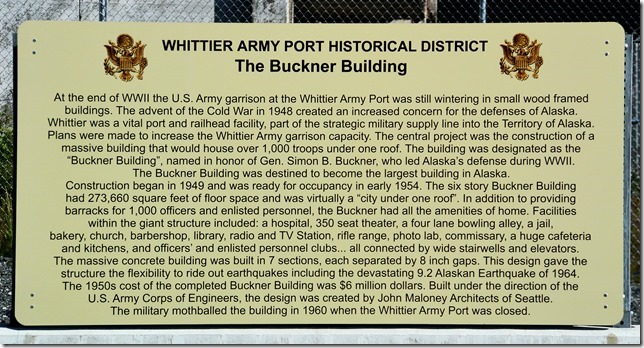
The next day dawned gray and dreary, as forecast – but we just had to go see a glacier from the water. They had gotten the mechanical problems put to rest, and we signed up for the $39 one-hour tour (well worth the money). While we waited for our departure time, we took a short hike (one mile) up to see the Byron glacier.
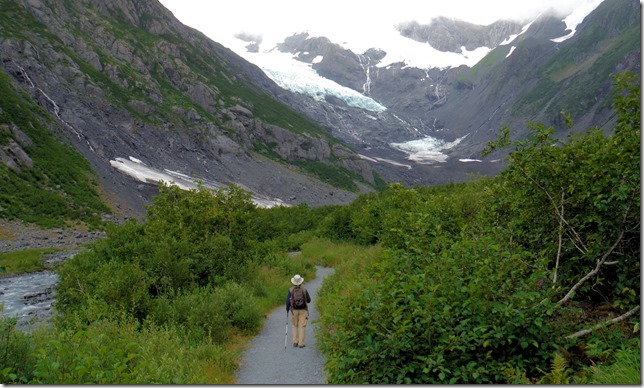
It’s been receding for a while (like most glaciers), and is not too impressive. What you can see from the end of the trail is mostly moraine and rubble. But you still get the solid impression of a lonely glacier valley, fed by the irresistible winter storms and snows. The tiny dots at the lower right are two tourists checking out the crumbling foot of the glacier.
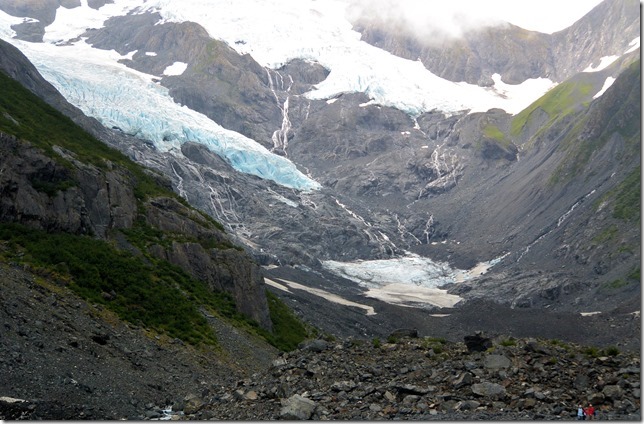
After the Byron walk, we headed back for the tour and boarded the ferry-like tour boat. The wind was brisk, and it was raining on and off, but we took the top deck for its good visibility. (Also, with the miserable gray light, I didn’t want to compromise photos further by shooting through hazy glass windows on the main deck.)
One fellow passenger was this plastic barn owl. We wondered and scratched our heads, but couldn’t figure it out. A deckhand helped us resolve the question: it helps keep the birds away (and pooping on the boat). The aquarium was just as puzzling. It’s for showing kids how much ice is below the surface of the water. The crew will (when possible) net up some tiny iceberg-lets and drop them in the aquarium.
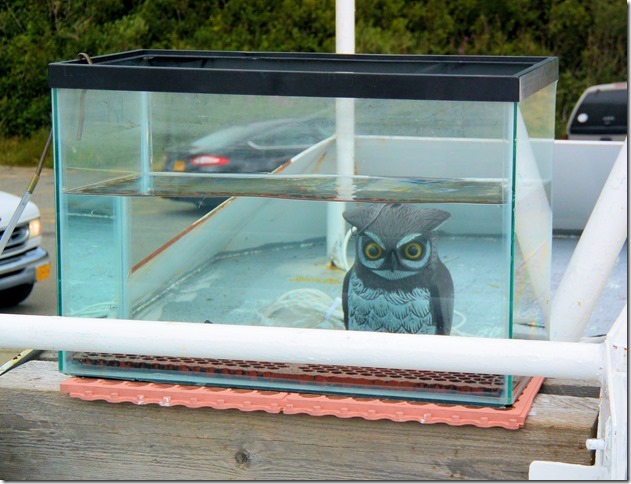
The glacier we are going to see is not visible from the boat launch. It comes into view after swinging out across the lake and traveling southeast for a mile or so. At first, it just looks like a snow-covered hill.
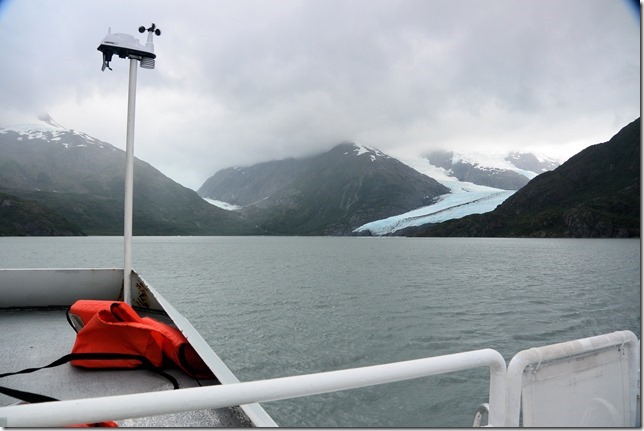
Then, as get closer abeam, my wide-angle lens is stretching to pull it all in.
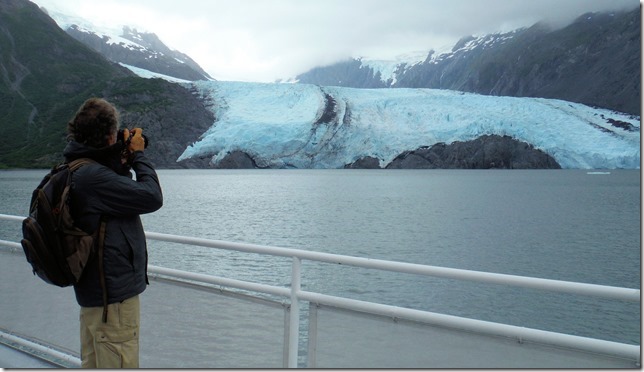
We can get fairly close, but we still have to be careful not to risk any big calving actions. The rumpling and fracturing are fascinating to see up close. It’s impossible to imagine gold miners trekking across this mess – – but they did, on a regular basis. A few of them died in the attempt.
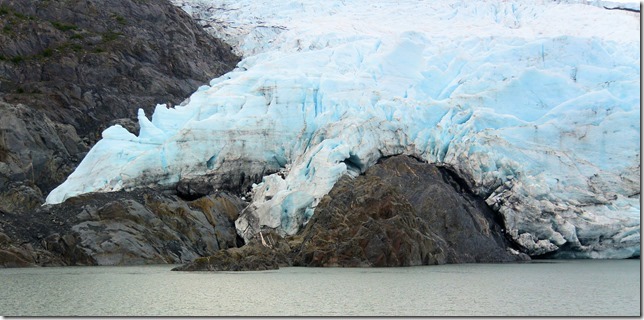
Here at the water’s edge the deep cracks are visible. These are 40 feet high.
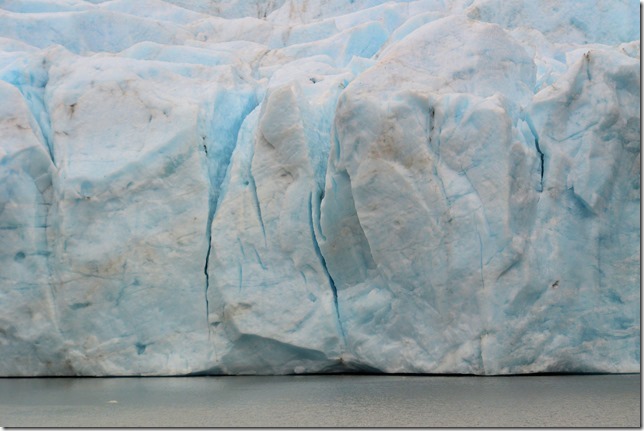
Down at the bottom is the older, compressed, blue ice. The color comes not from the ice, but the way light travels through clear ice. It’s clear when there’s no air entrapped.
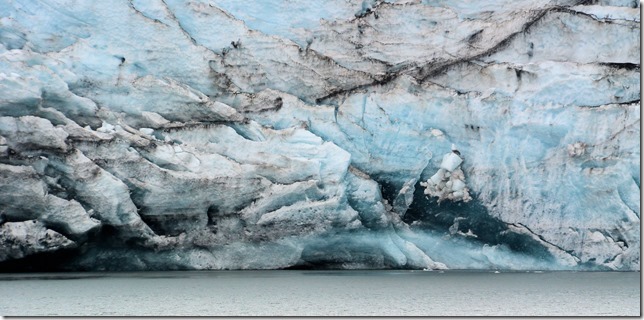
As we departed the glacier, the many little berg-lets dotted the water. Most of these won’t survive the long float over to the visitor center.
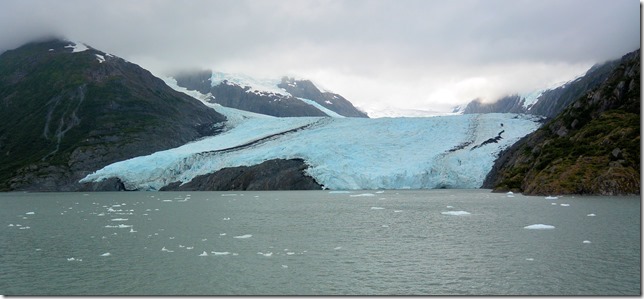
But there are a few taller specimens that might make the journey, weathered as they were already.
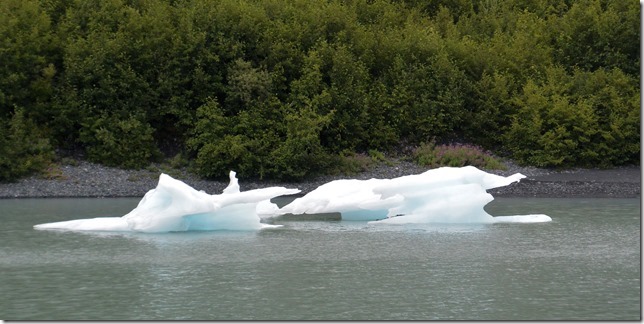
Tomorrow, we’re leaving Portage Valley to discover some more of the Kenai peninsula. The weather is supposed to be better in Soldotna than in Seward, but you simply never know about the weather up here. We’ll head for Soldotna and see what we find.
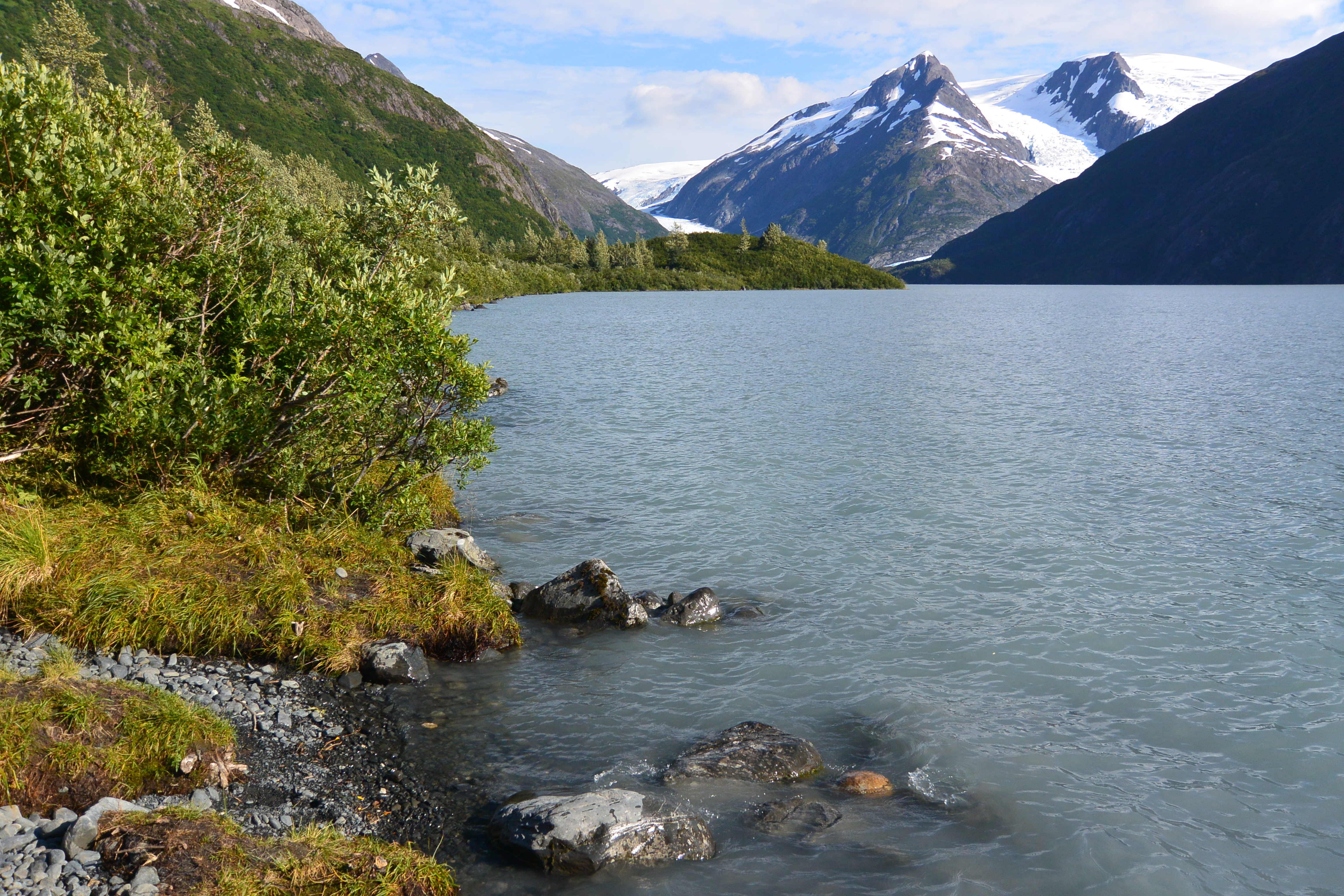
As always Greg and Karen am thoroughly enjoying your write ups and so
appreciate learning about all these wonderful places. Be safe. Love, Irene
As usual Greg, a wonderful and interesting “tale to be told”. I’m enjoying every bit of it. Love you both, Mom
I hope you put a book together about the entire trip..
You wrote in very details step by step ..rather mile after mile about your adventure..
You may as well go to the tip.. Dutch Harbor ..
Greg and Karin,keep the stories and experiences coming..
tony and marlene..
Tony, I could probably write nearly a book in place of every post, there’s so much stuff we haven’t done or I’m leaving out. I don’t think Dutch Harbor is in the cards this trip — it’s about 1,000 miles away, by air or boat (ha!). Someday.
Anyway, we have another 3 weeks or so on the Kenai peninsula and then headed (sort of) back in the general direction of home.